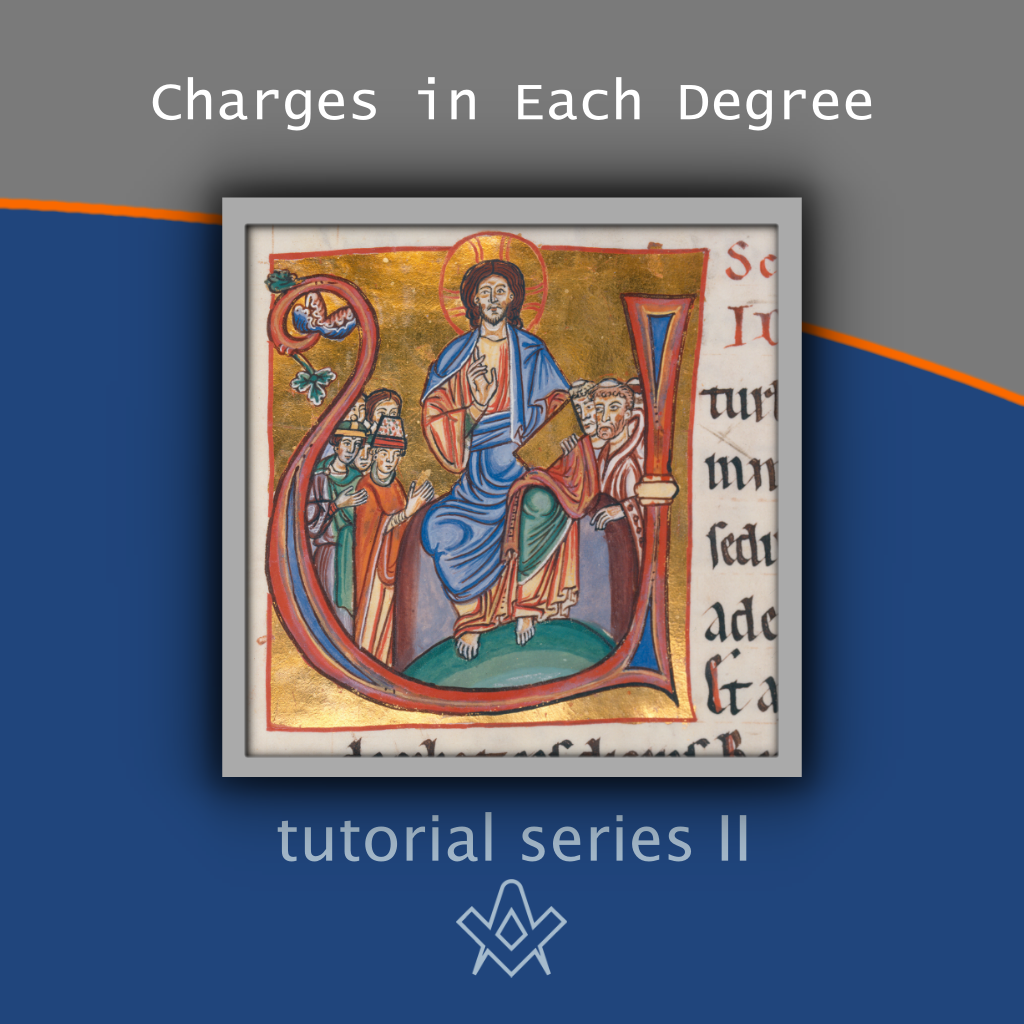The ‘Old Charges’ (or Constitutions) are documents that have come down to us from the 14th century.
They contain the rules and regulations by which both operative and speculative Lodges should be run and the moral and social standards to which each Lodge member should adhere.
The Charges in Each Degree
Video Presentation
Some of the Old Charges include the likes of the Halliwell Manuscript better known as the Regius Poem of 1390, the Cooke Manuscript of 1490, Edinburgh-Kilwinning Manuscript of 1670, Lodge of Antiquity Manuscript of 1686, and the Papworth Manuscript of 1714.
There are many more in the libraries and Grand Lodges around the world.
The first official ‘Book of Constitution’ was written by Anderson and Désaguliers in 1723.
At the Uniting of the two Grand Lodges, Moderns and Ancients, on 27 December, 1813, an updated version of the Old Charges or Constitutions was written by Williams in 1815.
The present UGLE ‘Book of Constitutions’ is substantially that of Williams.
Each of the three degrees in Craft Masonry has its own ‘charge’, which relates to the purpose of the degree and gives an expectation of how the candidate should conduct himself.
The first degree is about the ‘moral man’, and the charge after initiation reflects that intention.
Anderson’s Constitution of 1723, broke down how a Freemason should act in the following circumstances:
1. Of God and Religion.
2. Of the Civil Magistrate, supreme and subordinate.
3. Of Lodges.
4. Of Masters, Wardens, Fellows and Apprentices.
5. Of the Management of the Craft in working.
6. Of Behavior, viz.:
1. In the Lodge while constituted.
2. After the Lodge is over and the Brethren not gone.
3. When Brethren meet without Strangers, but not in a Lodge.
4. In Presence of Strangers not Masons.
5. At Home and in the Neighbourhood.
6. Toward a strange Brother.
When we break down the modern first degree ‘charge after initiation’, we find that it covers each of the same points made in 1723, which itself is a reflection on the behaviour of a Mason written in the Halliwell Manuscript.
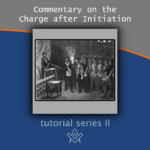
Commentary on the Charge after Initiation
A more detailed explanation in order for us to understand the Charge after Initiation
more….
The second degree ‘charge’ reflects that of the ‘educated man’. It reminds you of your behaviour as taught in the Charge after Initiation, and goes on to invite you to study the Liberal Arts and Sciences, in particular Geometry which stands as the basis of our Institution.
In other words, it emphasizes the importance of education, self-development and the moral meanings behind our rituals.
To act as a role model both inside and outside of the Lodge. It teaches us to: ‘judge with candour, admonish with friendship, and reprehend with mercy’.
It teaches you to act as a good friend, never to wrong people, but be as supportive as you can without detriment to yourself or your connections.
The third degree charge asks you to reflect upon yourself as both a moral and educated man. It encourages you to achieve in life what you want to achieve without fear and under the guidance of your faith.
To be the best version of yourself that you are able to be. That you ‘live respected and die regretted’.
Such are the rules governing the behaviour expected from a Freemason. Rules that have been laid down for our guidance for centuries and are our antient landmarks.
To be a good, virtuous, charitable and educated man of faith. A man who inspires brotherly love, relief, and truth.
Footnotes
Referances
Bibligraphy
http://www.scozzeserettificato.ch/Docs/Ancch.pdf
https://www.masonic-lodge-of-education.com/old-charges.html
The Book of Constitution Ritual Book
Lodge of Union No. 38
Article by: Stephen J. Goulding
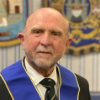
Stephen was initiated into Freemasonry in 1978 in Tylney Lodge No. 5856 (UGLE). He was Master in 1989 & 2004.
He was Master of the Lodge of Union 38 (UGLE) in 2018. He is also a PZ in the Holy Royal Arch and PM in the Mark Degree.
Stephen served 30 years in the Metropolitan Police Service (London, England) before going into education in 2000, where he became a college lecturer and a mentor for both the college and the University of Greenwich (London, England). Now retired, he teaches Tai Chi and Qigong in the community.
Facebook: Steve Goulding-Tai Chi West Sussex–Chi at Chi
Recent Articles: in this tutorial series
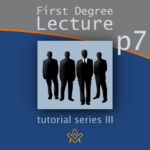 William Preston (1742 – 1818) gives his lectures in the form of a Catechism – questions and answers - and broken down into seven bite size chunks. This article is the first of the seven part series presented by Steve Goulding |
 William Preston (1742 – 1818) gives his lectures in the form of a Catechism – questions and answers - and broken down into seven bite size chunks. This article is the first of the seven part series presented by Steve Goulding |
 William Preston (1742 – 1818) gives his lectures in the form of a Catechism – questions and answers - and broken down into seven bite size chunks. This article is the first of the seven part series presented by Steve Goulding |
 William Preston (1742 – 1818) gives his lectures in the form of a Catechism – questions and answers - and broken down into seven bite size chunks. This article is the first of the seven part series presented by Steve Goulding |
 William Preston (1742 – 1818) gives his lectures in the form of a Catechism – questions and answers - and broken down into seven bite size chunks. This article is the first of the seven part series presented by Steve Goulding |
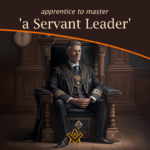 Apprentice to Master, “a Servant Leader”. Freemasonry is a learning platform used to improve a lifestyle which is morally, educationally and spiritually sound. To guide a person through life in order to be the best they can be. A Master, or ‘Servant Leader,’ develops those people in their care. They are someone who can guide others using the principles of Freemasonry - By Stephen J. Goulding |
 William Preston (1742 – 1818) gives his lectures in the form of a Catechism – questions and answers - and broken down into seven bite size chunks. This article is the second of the seven part series presented by Steve Goulding |
 William Preston (1742 – 1818) gives his lectures in the form of a Catechism – questions and answers - and broken down into seven bite size chunks. This article is the first of the seven part series presented by Steve Goulding |
 Commentary on the Third Degree Charge The Third Degree Charge invites the candidate to reflect on his life as both a ‘moral’ and ‘educated’ man, and to contemplate on what may be missing in his life. The ‘genuine secrets of a Master Mason’. |
 Commentary on the Second Degree Charge In the second degree we learn about being an educated man. Skilful, not only in the Craft itself but also how to communicate and manage others. This Commentary looks at the second degree charge in detail. |
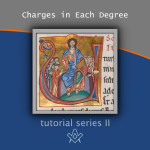 The ‘Old Charges’ have come down to us, containing the rules and regulations by which Lodges should be run and the moral and social standards to which each Lodge member should adhere. |
 Steps to the Making of a Master. The symbolism of each step of the winding staircase is to continue your personal development throughout your life, right up to your last breath in this world. |
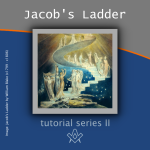 On the First Degree tracing board the most dominant feature is Jacob’s Ladder stretching from Earth to Heaven. Being straight, it is the shortest and quickest way to reach heaven, and being straight you can see the end goal. |
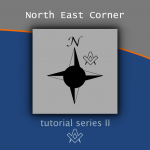 The North East Corner: A Lesson on Charity The ritual of the North East corner is a powerful piece of teaching. Let us examine that piece of ritual more closely; the lesson on charity. |
 When we look at the ritual book the deacons are told to ‘perambulate’ with the candidate. So what does this really mean? |
 The taking of a ‘Vow of Fidelity’. Oaths, Vows and Covenants |
 Morality veiled in allegory and illustrated by symbols A phrase that immediately comes to mind when describing Freemasonry – Morality veiled in allegory and illustrated by symbols. Let us have a look at what this phrase actually means. |
 Officers of the Royal Arch - The Principals The Principals' role in the Royal Arch, representing the pinnacle of spiritual leadership. Their esoteric significance lies in the unity of the three aspects of the divine, emphasizing the importance of harmony and balance in attaining spiritual enlightenment. The Principals embody the ultimate goal of the Royal Arch journey - the realization of divine wisdom. |
 Officers of the Royal Arch - Scribe Ezra Scribe Ezra is portrayed as a crucial figure within the Royal Arch, responsible for interpreting and teaching divine laws. The significance of his role lies in the pursuit of understanding and applying sacred knowledge, emphasizing the transformative power of wisdom when applied to one's life. |
 Officers of the Royal Arch - Scribe Nehemiah Scribe Nehemiah's responsibility within the Royal Arch, is that of preserving the sacred teachings. Scribe Nehemiah symbolizes the importance of maintaining accurate records and upholding the integrity of divine knowledge, thus reflecting the value of safeguarding spiritual wisdom for future generations. |
 Officers of the Royal Arch - The Sojourners The Sojourners, are seekers of truth, their journey symbolizes the spiritual path to enlightenment. Their role in rediscovering lost wisdom highlights the esoteric concept of regaining divine knowledge through perseverance and self-discovery. |
 Commentary on the Charge after Initiation A more detailed explanation in order for us to understand the Charge after Initiation |
 Officers of the Royal Arch - The Janitor The Janitor, is a crucial officer in the Royal Arch. Symbolically, the Janitor represents the guardian of sacred knowledge, ensuring only worthy individuals gain access. This function emphasizes the importance of maintaining spiritual purity and safeguarding the mysteries of the Royal Arch. |
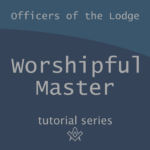 Officers of the Lodge - Worshipful Master Worshipful Master: the highest-ranking officer in the lodge, is the embodiment of wisdom and authority. The Worshipful Master guides the brethren on their spiritual path, representing the divine light that illuminates the Masonic quest for knowledge and self-discovery. |
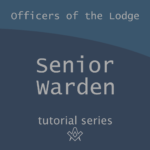 Officers of the Lodge - Senior Warden Senior Warden: embodies the essence of strength and stability within the lodge. As the pillar of support for the Worshipful Master, the Senior Warden symbolizes the fortitude required on our spiritual journey, inspiring us to persevere in the face of adversity |
 Officers of the Lodge - Junior Warden Junior Warden: Ensuring the well-being of the brethren during the lodge's hours of refreshment. Representing the virtue of temperance, the Junior Warden reminds us to find balance in our lives and cultivate moral discipline in our pursuit of truth. |
 Officers of the Lodge - Deacons Deacons: The messengers and intermediaries within the lodge. Representing the communication between the material and the spiritual realms, Deacons symbolize the importance of transmitting knowledge and wisdom as we strive for personal growth and enlightenment on our Masonic journey. |
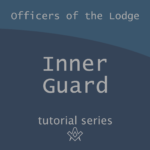 Officers of the Lodge - Inner Guard Inner Guard: Is the first line of defence against unworthy intruders, the Inner Guard represents our inner conscience and the personal responsibility we have to safeguard the integrity of our spiritual journey. |
 Tyler: The significance as the protector of the lodge's secrets and harmony. Tasked with guarding the entrance, the Tyler symbolizes our spiritual and moral boundaries, ensuring only worthy candidates are allowed into the sacred space of Freemasonry's teachings and rituals. |
masonic knowledge
to be a better citizen of the world
share the square with two brothers

click image to open email app on mobile device


